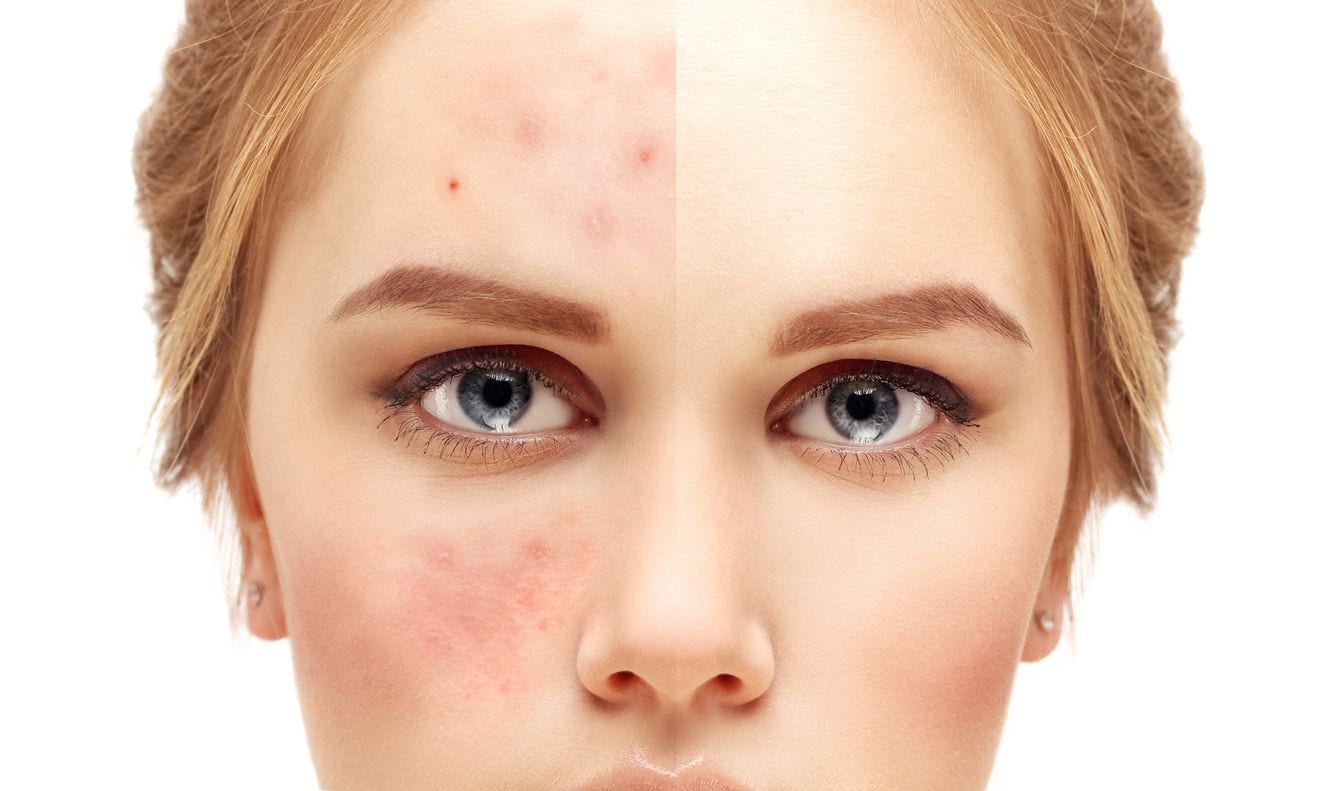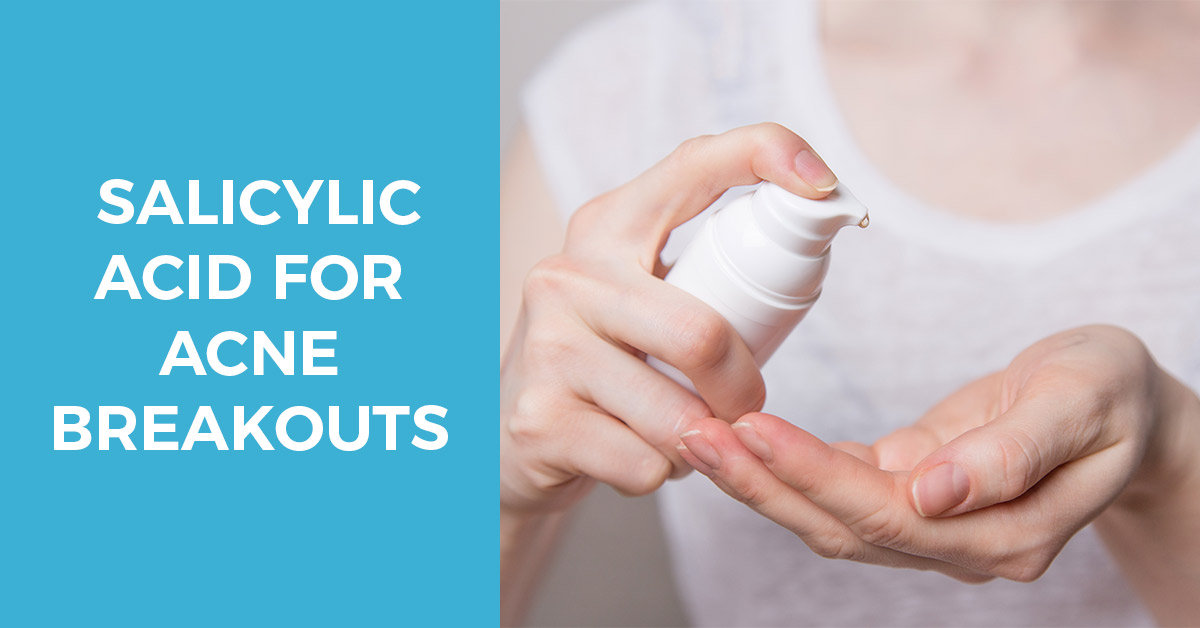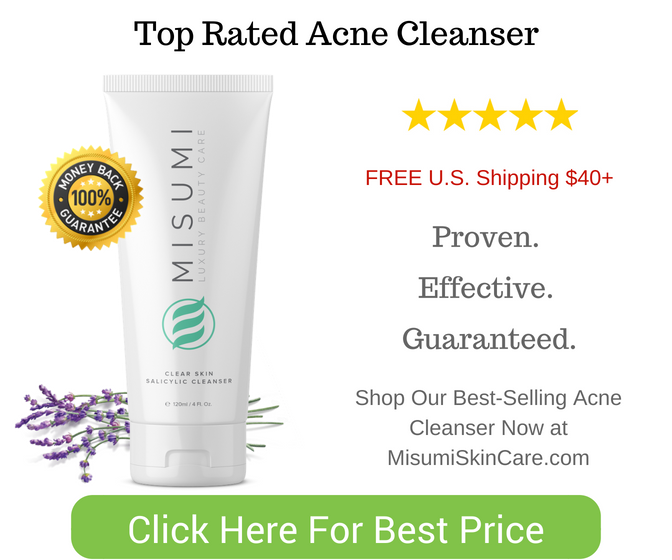Contents
Over 80% of the world population suffers from various types of acne at some point during their life and knowing how to effectively clear and prevent their formation in the future is important to us all.
Today, we take a detailed look at salicylic acid – a well-known acne combating ingredient that makes the core of many skin cleansing products on the market. Read on to learn how it helps deal with acne, what skin types and tones should be using it and what salicylic acid containing products perform best.
What is Salicylic Acid?
Salicylic acid is a chemical exfoliant that removes dead skin cells, excess oil, dust and debris from the surface of the skin, unclogs pores and prevents pore clogging. Also known as beta hydroxy acid (BHA), it was first derived from a complex carbohydrate that’s found in the willow bark, and got its name from the Latin term “salix”, which stands for willow bark. The powdered bark is gathered from the tree and treated with multiple oxidants and filters to eventually form the acid.
How Does Salicylic Acid Help Your Skin?
By formulation, salicylic acid is very close to the well-known painkiller aspirin (also known as acetylsalicylic acid). When taken orally, it relieves pain and improves blood circulation. When applied to the skin, it breaks down fatty compounds, like the sebum oil of human skin, which results in unclogging pores.

What Does Salicylic Acid Do to Your Skin?
Salicylic acid is the only beta hydroxy acid used in skincare, and is only effective when used continuously for quite a bit of time during acne breakouts (results start to be noticeable only after 4 weeks of use), and even after the acne has cleared. If you stop using salicylic acid, pore clogging may return, resulting in the return of acne.
In addition to removing debris, excess oil and unclogging pores, salicylic acid also increases cell turnover (forcing your skin to renew faster), delivering results similar to scrubbing, yet without the typical side effects (like rupturing pores, damaging blood vessels or causing irritation). The increased cell turnover improves collagen production (the protein that grants the skin its toughness) making the skin a lot tighter. Also, the scrubbing effect can help deal with mild discolorations, but it is only advised to people with light skin tones.
Due to its high potency, just 0.5-2% concentration of salicylic acid is enough to effectively unclog pores and remove excess oil, yet it’s gentle and significantly less irritating on the skin compared to alpha hydroxy acids (with glycolic acid being a prime example). Salicylic acid also boosts the effectiveness of other ingredients in various skincare products.
Salicylic acid is great for getting rid of blackheads and large pimples, and can help reduce the size of large, cystic zits. It can also deal with mild cases of acne scarring and hyperpigmentation/discoloration after the acne is removed.
Here is a great explanatory video on how salicylic acid works:
What Skin Types Should and Shouldn’t Use Salicylic Acid
Salicylic acid is highly recommended for oily skin types that are prone to pore clogging. Dry and combinatory skin types can benefit from salicylic acid as well, although they will need to use a potent moisturizer along with it, since dryness and itching will occur in most cases.
The skin tone and color matter a lot. Generally, all light skin types are safe to use salicylic acid for extensive periods of time, with the addition of an oil-free moisturizer to deal with occasional irritation, dryness and itchiness, and sunscreen to protect the skin from UV rays during the day.
Darker tones however, especially the ones that tan quickly and rarely get sunburned, need to be very careful. The reason is that darker skin tones contain high amounts of melanin (the pigment that gives skin its color), which is also an antioxidant that limits inflammation.
Since salicylic acid inflames the skin to unclog pores and increase cell turnover, melanin naturally tries to cease this reaction with its antioxidant properties, which can result in removing the acne from the skin and replacing it with black skin spots. If you have dark skin, only use salicylic acid if directed (and under the care of) a qualified professional.
What Concentration of Salicylic Acid Should I Use?
Most brands offer cleansers/gels/lotions containing 0.5-2% salicylic acid for using on the face, and up to 3% for other parts of the body. In general, oily skin types will do better with 1/1.5/2% solutions while dry skin types may need a more gentle approach in the range of 0.5-1%.
If you have sensitive skin, start with the smallest concentration first (0.5%) and if everything goes well, gradually increase it until your skin no longer feels comfortable, and go back to the previous one. Always use a moisturizer and sunscreen along with it.
Combo skin types will have to base their decision on experience and trial and error. Again, start small and gradually increase until you find the concentration that’s comfortable for your skin.
Higher concentrations of salicylic acid (15/20/25/30%) are used in peeling procedures. Peeling is the process of removing the outer layer of the skin (along with any imperfections) and allowing new skin cells to take their place. Generally, a peeling is advised to be performed twice a month during the first 3 months, and afterwards, once a month every 2-3 months to achieve maximum results.
Peeling helps deal with moderate acne that doesn’t respond to over-the-counter treatments. Though it’s advisable to see a clinician for your peeling procedure, if you have enough experience and/or budget is an issue, you can perform the peels at home. Here is a great guide to help you get started with salicylic acid peel.
Here is a video on how Dr. Rosalyn George performs salicylic acid peels in a clinic:
Salicylic acid contained in most skincare products is generally very safe for the skin since the concentration isn’t high. However, during the first few times of use, it can cause dryness and irritation, which is why you should always keep a moisturizer handy.
Avoid using any aggressive cleansers while using salicylic acid. The addition of soothing and nourishing products in your skincare routine is important too. Even if salicylic acid doesn’t cause any discomfort during the first few weeks of use, it will certainly start doing so after a month or two without the help of hydrators and skin calming agents.
Do not use salicylic acid if your skin is wounded in any way, swollen or infected. Avoid the areas around the eyes.
It’s important to know that salicylic acid shouldn’t be spread all over the face – instead, apply a thin layer over the areas that have pimples on them. Don’t let the acid overstay – always remove it as explained in the user instructions (usually around 10-15 minutes).
Salicylic Acid Products
For salicylic acid to work as intended and actually deliver noticeable results, it needs to be in (preferably) gel form, at the right concentration for your skin type and tone, and the right PH level. The product that you’re considering needs to have a pH level of 4 or lower, or in other words, it needs to be acid enough to sting a bit, but not enough to cause any real damage to the skin. Learn more about the importance of pH here.
Here is a list of salicylic acid containing products that work well for the majority of users:
Like salicylic acid, benzoyl peroxide is an exfoliant that removes dead skin cells and debris from the skin, while also providing potent bactericidal (bacteria eliminating) effects.
Benzoyl peroxide comes in different concentrations ranging from 0.5%-10% in various skincare products. Compared to salicylic acid, it works faster (producing visible results in under 1 week of consistent use) however, it’s a lot more aggressive and can easily irritate the skin, causing dryness, unwanted peeling, redness and itching.
Another downside to benzoyl peroxide is that it can bleach fabrics so you will need to be careful with what you’re wearing when treating your acne, and also what towels you use to pat your skin dry after washing it off.
Due to its aggressiveness, benzoyl peroxide may be too harsh for dry and sensitive skin types (high concentrations, >5%, can be a problem for oily skin types as well), and the additional use of a moisturizer and sunscreen is essential. Like salicylic acid, benzoyl peroxide is just as effective when used in lesser concentrations in the majority of cases (with the exception of very oily skin types).
Final Thoughts
Salicylic acid is a tried and proven acne combatant, which doesn’t cause any damage or side effects when used correctly (unless you have dark skin), but is fairly slow to show noticeable results.
Using it in combination with benzoyl peroxide can increase the effectiveness of the whole treatment and speed it up. The additions of a sunscreen, moisturizer and soothing products/ingredients is highly recommended since your skin will get dehydrated and sensitive to sunlight when exposed to salicylic acid (and/or benzoyl peroxide) for long periods of time.
In case your acne is looking real bad, you can try salicylic acid peeling at home or a professional clinic. My personal advice would be to visit a clinic at least once or twice to get familiar with the procedure, and continue it at home when you’ve learned the steps.
Have you used salicylic acid containing products or peels before? What skin type and tone do you have? What results did you achieve? Would you recommend the combination of salicylic acid and benzoyl peroxide? Share your thoughts and experiences with all of us in the comments!



